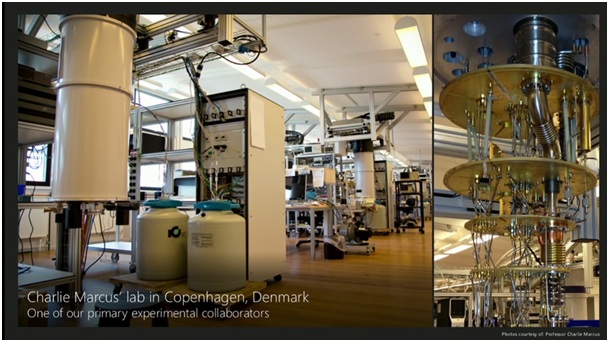QUANTUM COMPUTERS: WHEN MAGIC HAPPENS AND IMPOSSIBLE BECOMES PROBABLE
May 26, 2015
 The Microsoft Ignite conference, which took place in Chicago (USA) in the first week of May, clearly demonstrated how CEO Satya Nadella has changed Microsoft’s vision. We got to see the real direction, the company is taking, with a focus on multi-device, intelligent Cloud and new business processes. However, something that really made me think of what disruption and innovation means, was the keynote session on Monday, May 4, at the end of the day. During the presentation, Harry Shum, EVP of Microsoft Research, showed us how its research team is targeting the long run. Quoting Bill Gates, Shum said that people tend to underestimate what they can do in one year, but largely underestimate what can be done in 10 years.more–>
The Microsoft Ignite conference, which took place in Chicago (USA) in the first week of May, clearly demonstrated how CEO Satya Nadella has changed Microsoft’s vision. We got to see the real direction, the company is taking, with a focus on multi-device, intelligent Cloud and new business processes. However, something that really made me think of what disruption and innovation means, was the keynote session on Monday, May 4, at the end of the day. During the presentation, Harry Shum, EVP of Microsoft Research, showed us how its research team is targeting the long run. Quoting Bill Gates, Shum said that people tend to underestimate what they can do in one year, but largely underestimate what can be done in 10 years.more–>
Here are the key points on which the Microsoft Research team is focusing right now:
The Big Data apocalypse: The fact that we have Big Data (44 zettabytes to be reached) does not mean that they make big sense. One way to create this “sense,” introduced by Microsoft, is data visualization. This approach allows the end users to search large amounts of data, and work with them without complex operations, in a more friendly way.
The limit of human intelligence: AI will overtake human intelligence and now, we are getting the results of the researches that started years ago. Computer vision and computer training is considered to be something real, today. One example is the website how-old.net that is able, with a picture provided, to tell how old your face looks. This is the magic of machine learning, where computers do not just execute, but also learn things. Results show us that computer vision is getting more precise than human perception.
Quantum computers: For all people in the IT domain, quantum computers should mean nothing less than “THE legend”; and if you are not shocked by the principle of Quantum computer, it means that you didn’t understand what its real potential is. In a nutshell: Standard computers use binary digits, bits, which can be 0 or 1. Now, imagine that you can superpose these values to get qubits, which can be 0 and 1 at the same time. Quantum computers could do calculations that today are almost impossible and it would lead to a revolution that will make today’s super computer look like a chalkboard!

Although, Quantum computers are not yet available, but what seemed impossible few years back, has become probable today. In 2006, Microsoft created the Station Q with a specific focus on quantum computation and today, the initial results are coming through with applications to fields like health, energy, environment and, of course, Cloud and machine learning.
The quantum computers promise to open up a sea of new possibilities that will not only help machines speed up processes, but will also enable us to ask questions that we cannot even imagine today. What, now, takes days or months of calculation, will be possible in hours or minutes.
To be a pioneer in innovation, we have to find the answers to problems that people do not yet have today.

 English | EN
English | EN 